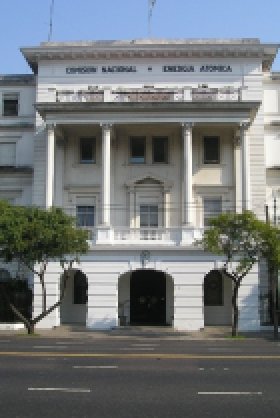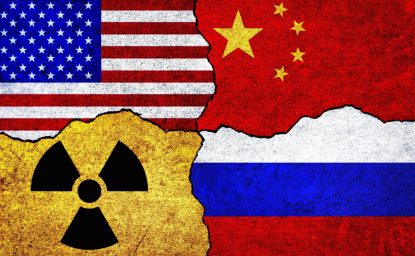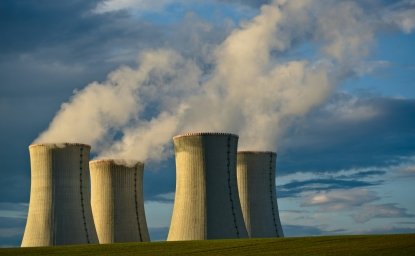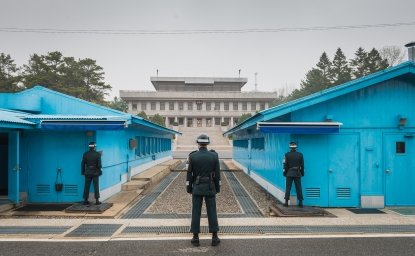The Brazilian Proposal to Renounce Peaceful Nuclear Explosions and the Argentine Response (1983-1985)



In early 1980's, Argentina and Brazil—both ruled by military dictatorships—were making significant advances in nuclear technology while undergoing radical domestic political transformations, which ultimately led to democratization in both Argentina (1983) and Brazil (1985). Until recently, scholars have ignored Argentine-Brazilian nuclear dialogue between 1983 and 1985, suggesting that relevant nuclear talks only took place under democratic governments in both countries.
Recently available Brazilian documents indicate that this traditional narrative is inaccurate. On the contrary, new evidence indicates that there was a fluid dialogue on sensitive nuclear questions between the Brazilian military regime and newly democratized Argentina between late 1983 and March 1985. This dialogue—an extension of ongoing consultations between the two countries that dated back to 1980—kept both sides comfortably aware of their counterparts’ intentions and capabilities, and prevented the development of a nuclear rivalry.
Mere days before the Argentine transition to democracy, on December 3 1983, the Foreign Minister of the last Brazilian military government, Ramiro Saraiva Guerreiro, met with the future Foreign Minister of the new Argentine democratic government, Dante Caputo, for a discussion of bilateral issues.
During the conversations on nuclear issues, Guerreiro said that the government of Brazilian general João Batista Figueiredo was interested in finding a formula that would help to “dissipate, in Latin America, in the United States and in Europe, any idea of rivalry or second intentions in our respective nuclear programs, and also to deny anyone the possibility of trying to throw us against each other.” [Document 1]
Next, Guerreiro suggested discussing the possibility of a joint declaration in which the Brazilian government and the new, democratic Argentine government of President Raúl Alfonsín would make it clear that they did not intend to produce nuclear explosives. At the time, neither Brazil nor Argentina had signed the Treaty on the Non-proliferation of Nuclear Weapons (NPT) and had not yet fully adhered to its regional analogue, the Treaty of Tlatelolco. This meant that with the necessary technical capabilities and know-how, both Brazil and Argentina could theoretically have built nuclear devices without violating their international commitments.
Interestingly, the Brazilian proposal of 1983 was remarkably similar to what had been suggested by US Congressional Representative Paul Findley, and put forward to the Brazilian and Argentine governments in 1977. [Document 2] What caused Brazil to dust-off this six-year-old proposal? Argentina’s announcement one month before that it had mastered uranium enrichment by gaseous diffusion at Pilcaniyeu may have been a motivating factor. Only in later years would Brazil also come to master this sensitive technology and match Argentina's technological feat.
Although the Argentine military government had previously informed the Brazilian government of its enrichment breakthrough as well as its peaceful ends by means of a personal letter from the President of the Argentine military Junta [Document 3], Argentina had surprised the world with its announcement at a time when it experienced an unstable political context: in June 1982 it had been militarily defeated by the United Kingdom–a nuclear NATO power– in the Malvinas/Falklands war, and was in the midst of a delicate political transition towards a democratic regime. In this sense, Argentina’s private communiqué to the Brazilian government suggested a willingness to limit the regional consequences of the enrichment announcement.
At the December 3 1983 pre-transition meeting, future Argentine Foreign Minister Dante Caputo received the Brazilian proposal favorably and both agreed to keep talks in the following years on the possibility of a joint renunciation of peaceful nuclear explosions. The diplomats tasked with deepening these conversations starting in 1984 were the Argentine Jorge Sábato and the Brazilian Roberto Abdenur.
In stark contrast to the policies of the Carter Administration, the Reagan Government was receptive to regional initiatives in the nuclear field, including those outside the NPT. In this vein, in the early January 1984, an official from the US State Department visited an Argentine diplomat from the Embassy in Washington and suggested that nuclear dialogue between the United States, Brazil and Argentina would experience a “relevant improvement” if both countries formally declared that they would not manufacture a nuclear explosive, regardless of joining the NPT or Tlatelolco regimes. [Document 4]
The documentary record of the conversations between Sábato and Abdenur indicates that Argentine President Alfonsín accepted the Brazilian initiative. In view of this fact, the issue was again examined in detail by the different agencies of the Brazilian government. The Brazilian Foreign Minister took the proposal to Minister and presidential advisor Danilo Venturini, who in turn, took it to President Figueiredo. The Brazilian President had a positive reaction, but suggested that the question be examined by the different sectors involved in the Brazilin nuclear program. Although the latter received the idea favorably in principle, they expressed reservations regarding two issues: the opportunity of such a declaration and the interpretation risks that could arise in the future.
Despite these misgivings within the bureaucracy, Abdenur and Sábato had agreed that both governments would make a Joint Declaration at some future but as-yet-unscheduled Alfonsín-Figueiredo meeting, which in the end, never took place. Argentina and Brazil only renounced peaceful nuclear explosions at the start of the 1990’s as they moved towards the Brazilian-Argentine Agency of Accounting and Control of Nuclear Materials (ABACC) regime.
Document 1: Memorandum from Ambassador Roberto Abdenur to Minister Saraiva Guerreiro, 10 January 1985, secret.
Source: Rubens Barbosa/CPDOC Archives
This document reports on the bilateral nuclear relationship between Brazil and Argentina from the Alfonsín presidency until the end of the Figueiredo Administration. The main theme is a possible joint declaration on the renunciation of nuclear explosives. Alfonsín and Foreign Minister Caputo are in favor, but elements within the Brazilian government remain opposed.
Document 2: Report presented by the Vice-President to the President of the Republic on the occasion of the ceremony of the signature of the new Panama treaties, September 7 1977.
Source: Antonio Azeredo da Silveira/CPDOC Archives. AAS 1974.04.23.
Vice-President Adalberto Pereira reports on a meeting with Republican Congressman Paul Findley, who proposed, on a personal basis, the creation of a nuclear mutual surveillance system between Brazil and Argentina, with a view to allaying doubts about a possible arms race. Findley had already presented the proposal to Ambassador Geraldo Holanda Cavalcanti, (aide to Minister Silveira) on the occasion of the visit to Brasília on August 23 1977. According to the agreement he proposed, Brazil and Argentina would renounce the intention to develop a nuclear device and would accept mutual inspections of their respective nuclear facilities.
Document 3: Exchange of correspondence between Argentine President Bignone and Brazilian President Figueiredo on uranium enrichment
Source: Achieved by Argentina. Folha de São Paulo, page 4, November 19 1983.
Bignone informs Figueiredo of the Argentine capacity to enrich uranium. In his answer, Figueiredo expresses satisfaction for the result achieved by the neighbor country.
Document 4: Note from Argentine Ambassador García del Solar to the Argentine Foreign Ministry, secret, January 18 1984
Source: AMRECIC
On the eve of the trip of American Secretary of State George Shultz to Brazil, the American officer responsible for the Brazilian desk at the Department of State conveys to the Argentine Embassy in Washington that the United States would appreciate an initiative toward the implementation of a system of mutual inspections or a joint declaration in which both countries would renounce the development of a nuclear device, the same two points proposed by American Congressman Paul Finley in 1977.
Disclaimer: This dossier is the result of an ongoing research on the international history of Brazil’s nuclear program. The above historical narrative and selection of documents and oral history interviews might be updated as new and relevant evidence is uncovered.
Author

Nuclear Proliferation International History Project
The Nuclear Proliferation International History Project is a global network of individuals and institutions engaged in the study of international nuclear history through archival documents, oral history interviews, and other empirical sources. Read more


History and Public Policy Program
A leader in making key foreign policy records accessible and fostering informed scholarship, analysis, and discussion on international affairs, past and present. Read more




